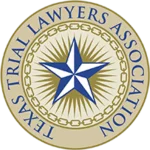Why Hire Our Slip and Fall Injury Lawyer in San Antonio?
We’ve all occasionally lost our balance and tripped, and apart from sustaining a bit of a bruised ego, such stumbles usually don’t cause serious harm.
But many slips and falls are more than a case of clumsiness — often, they happen because of someone else’s negligence.
If you’ve sustained injuries in a slip and fall caused by someone else, you could be entitled to compensation. Slip and fall accident claims are a branch of premises liability, which imposes a duty on property owners to maintain a safe environment and holds them accountable for accidents and injuries that occur on their premises.
Slip and fall accidents can happen anywhere – especially in San Antonio’s bustling and tourism-driven urban center. Restaurants, nursing homes, shopping malls, and supermarkets are prime locations for accidents.
Walmart Supercenters and San Antonio River Walk — home to the Alamo and Shops at Rivercenter — regularly draw large crowds of families, tourists, and locals. And despite the existence of entire operations divisions responsible for maintenance and public safety, accidents happen.
If you’ve slipped on a wet floor, tripped on a hazard, or fallen down steps because the property owner failed to maintain a safe environment, San Antonio slip and fall lawyer and Law Ninja Dr. Louis Patino can help you get justice and compensation for your injuries.
We pride ourselves on offering a personalized service that turns the “typical personal injury attorney” stereotype on its head and ensures you’re satisfied with the outcome of your case.
Every claim begins with a free, no-obligation case review with our English and Spanish-speaking slip and fall personal injury lawyer so you can learn about your options and determine if we’re the right firm for you.
You’ll also never pay fees until we win your case.
To speak to our slip and fall lawyer in San Antonio, get in touch online, in person, or by phone.
Call Us
You can always reach us by telephone. Call 855-LAW-NINJA, and you will be redirected to our San Antonio office or out-of-hours line, manned 24/7.
Send a Message via Our Contact Form
If you’d prefer to write to us, you can submit a confidential contact form on our dedicated contact page or any page on our website. After receiving your message, we will call to discuss your case further.
Video Call
If you cannot visit us in San Antonio, we offer video calls, giving you all the benefits of an in-person consultation from the comfort of your home.
Visit Our Office
If you can attend your case review in person, you’re welcome to visit our office at Alamo Towers, 901 NE 410 Loop #700, San Antonio, TX 78209.
We Come to You
We understand your injuries may make it difficult for you to attend our office. We want to make recovering your rightful compensation as easy and stress-free as possible, so if you’re unable to travel to us, we may be able to come to you. Just call or send us a message letting us know where you are, and we’ll arrange a time and date that works for you.



